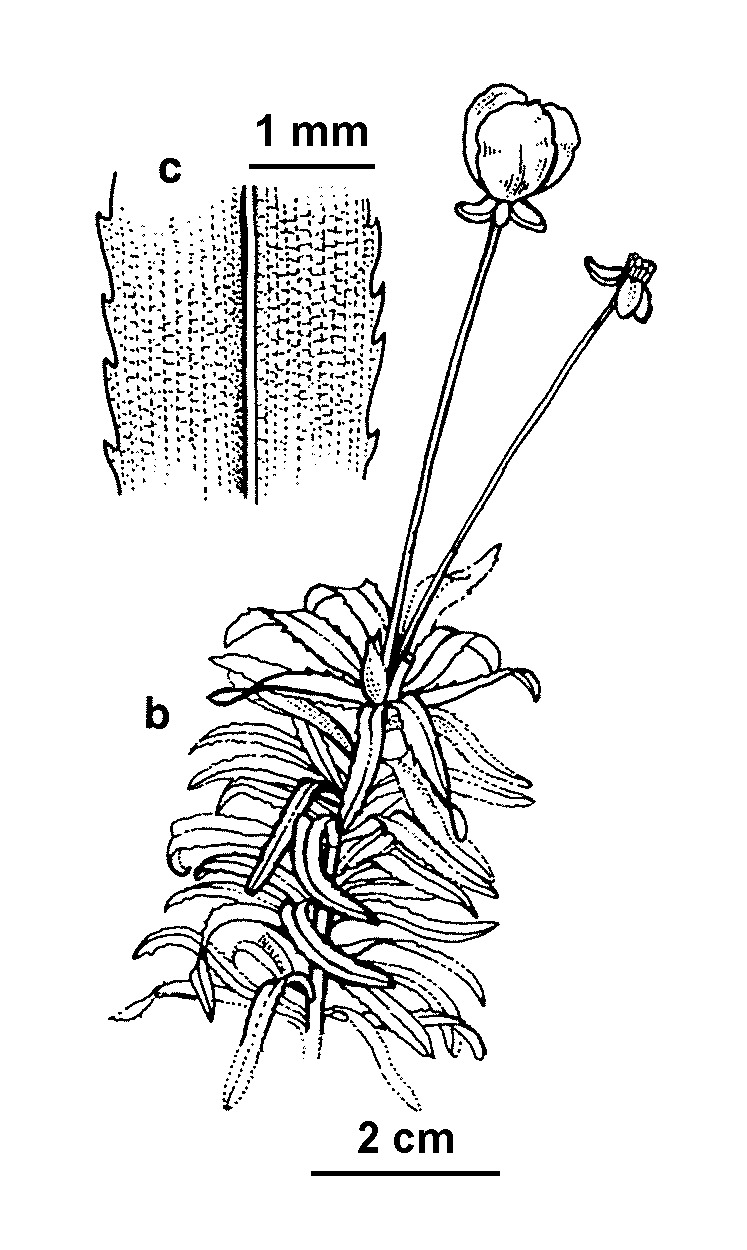Egeria
Submerged freshwater, dioecious herb, much-branched, attached to substrate. Leaves (3–)4–5(–6) per whorl (basal leaves opposite), mostly very crowded, sessile, (1–)1.5–3(–4) cm long, narrowly ovate to ± oblong, glabrous, green, 1-veined; margin minutely toothed with fine translucent teeth; apex obtuse to acute. Flowers basally subtended by united floral bracts, each with a thread-like hypanthium, which elongates to bring distal part of flower to the water surface; perianth of 2 whorls of 3 segments each, the outer whorl green to translucent, often with reddish tinge; inner whorl white and 2–3 times as long as outer. Male flower (1–)2–4(–5) per united floral bracts; stamens 9(or 10). Female flower solitary per united floral bracts, with hypanthium 4–6 cm long; staminodes 3, opposite outer perianth parts; ovary enclosed in base of hypanthium, unilocular; style as long as hypanthium; stigmas 3, broad, narrowing at base, 3(or 4)-lobed and hairy at apex. Seeds 7–8 mm long.
1 species from subtropical South America, naturalised in Australia, New Zealand, North America, Mexico, Chile and England.
Conn, B.J. (1994). Hydrocharitaceae. In: Walsh, N.G.; Entwisle, T.J., Flora of Victoria Vol. 2, Ferns and Allied Plants, Conifers and Monocotyledons, pp. 129–136. Inkata Press, Melbourne.
 Spinning
Spinning



